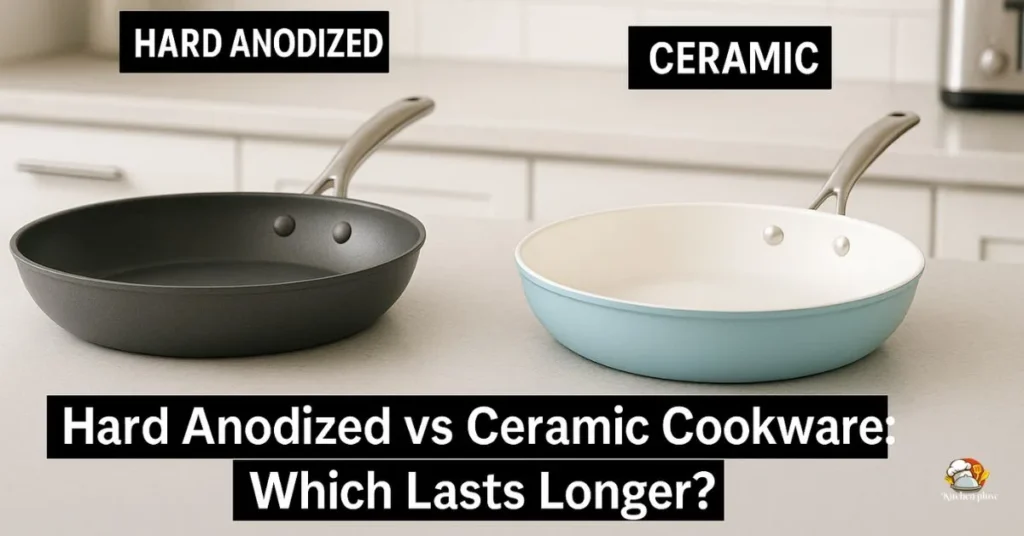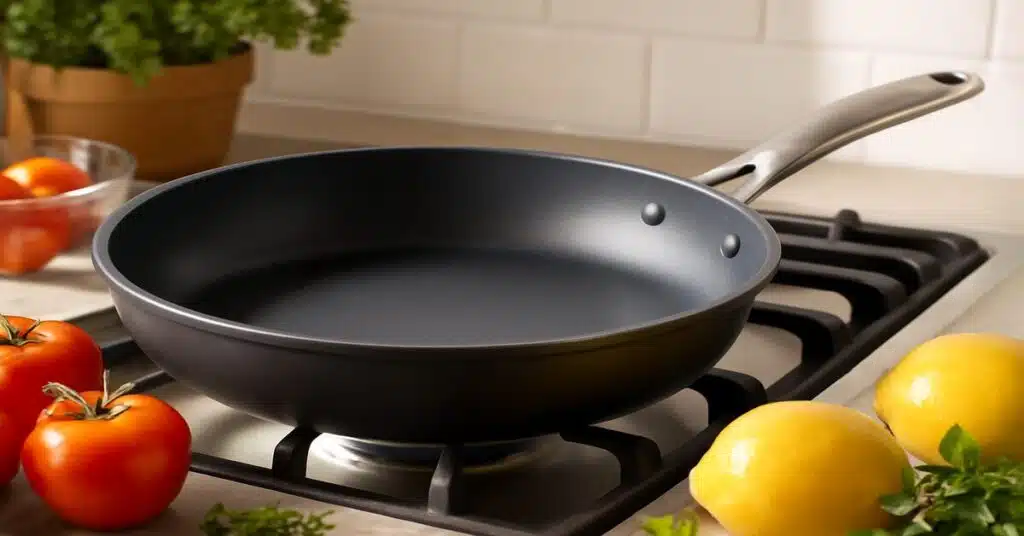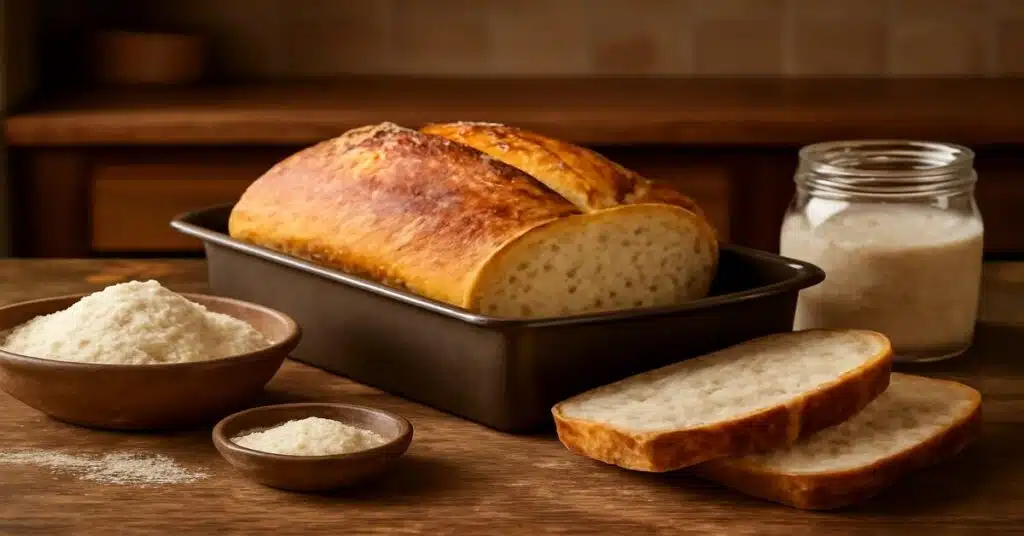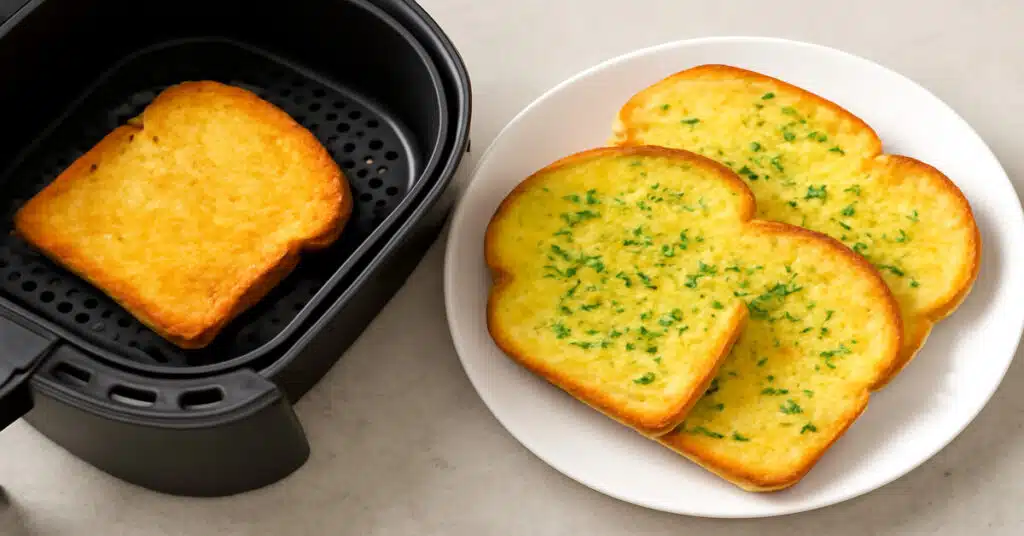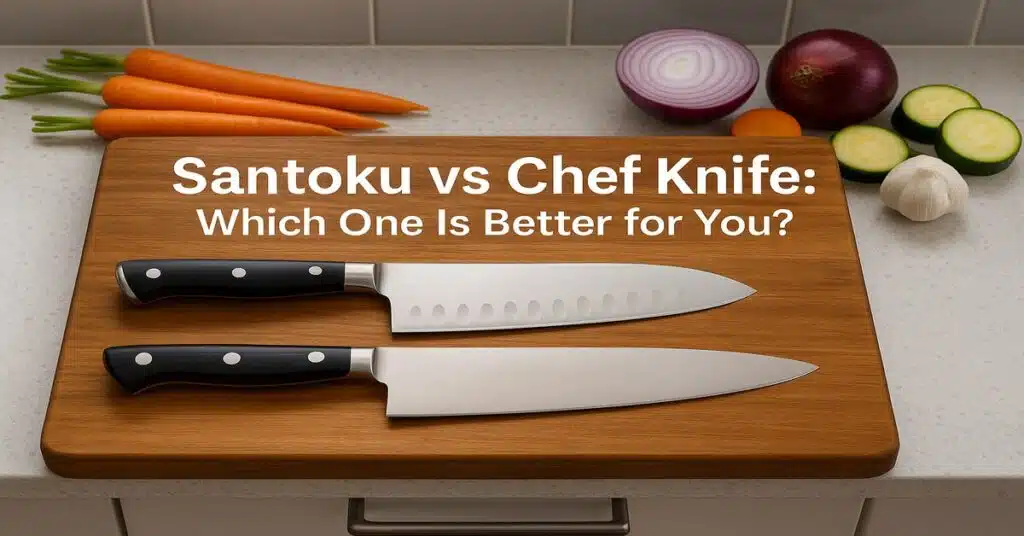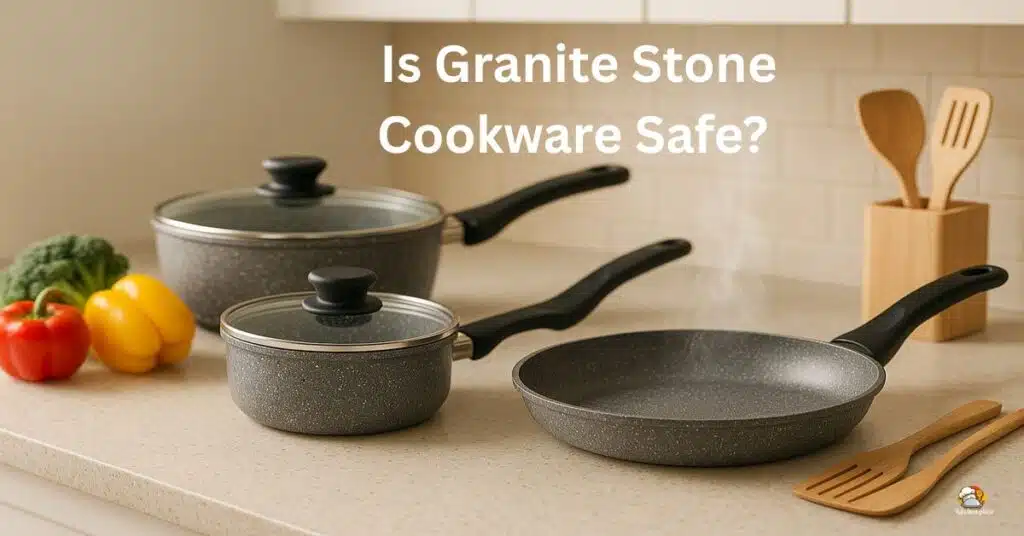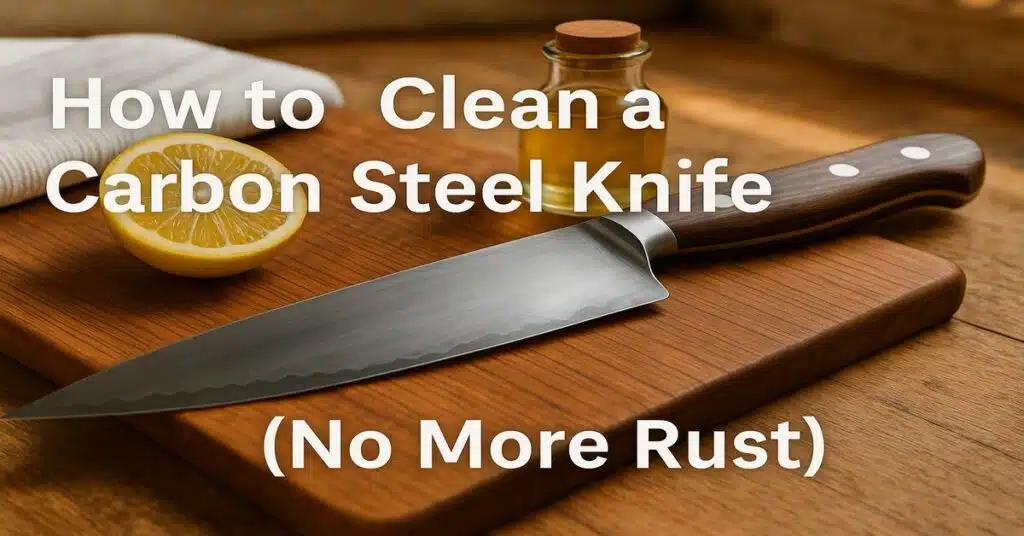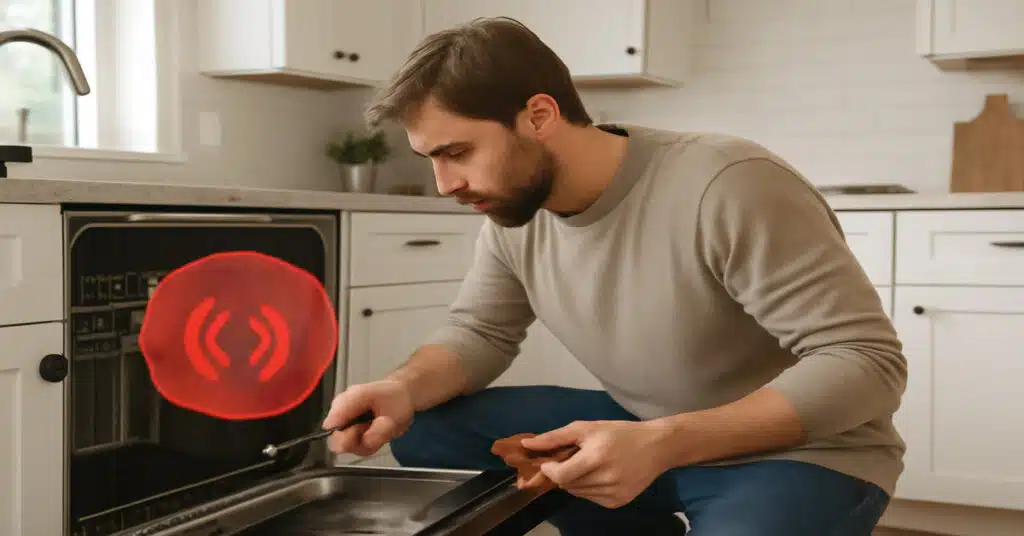Hard anodized cookware lasts 5–10 years and works best for high-heat cooking, while ceramic cookware is eco-friendly, PTFE-free, but usually lasts only 1–3 years.
Choosing the right cookware is one of the most common kitchen dilemmas in 2025. The choice isn’t just about taste — it also affects safety, durability, cleaning effort, eco-friendliness, and long-term cost.
I’ve tested both hard anodized aluminum pans (Calphalon, Circulon) and ceramic cookware (GreenPan, Caraway, Xtrema) in my own U.S. kitchen. From making breakfast pancakes to cooking high-heat stir-fries, I’ve experienced how each material performs in real American household cooking.
Many readers ask me: Which is better — hard anodized or ceramic cookware for long-term health and everyday use? And which is healthier, ceramic or hard anodized cookware?
This guide gives you a clear, side-by-side comparison of both cookware types. You’ll learn about durability, safety, cooking performance, cleaning, and price — so you can confidently choose the best option for your home.
👉 Want my tested picks? Check out the Best Hard Anodized Cookware 2025.
⬇️To make a fair comparison, let’s start with what hard anodized cookware actually is.
What is Hard Anodized Cookware?
Hard anodized cookware is made from aluminum that goes through an electrochemical anodization process (Wikipedia – anodizing). This treatment hardens the metal surface, making it denser, stronger, and more scratch-resistant than regular aluminum.
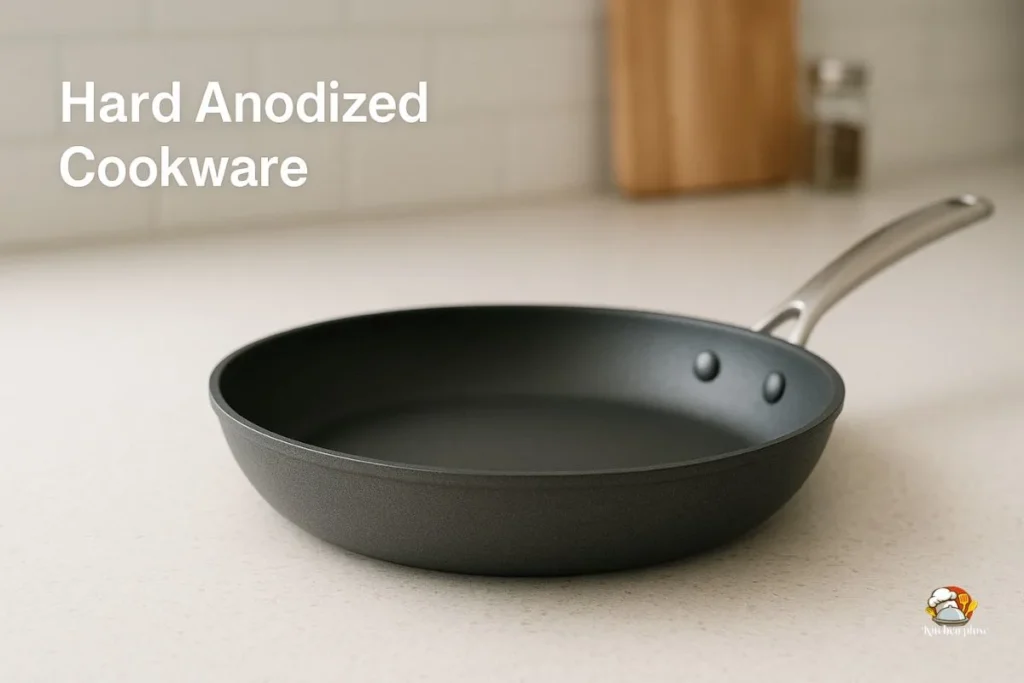
Because of this process, the cookware becomes durable, non-reactive, and safe for daily cooking.
Key Features of Hard Anodized Cookware:
- Durable → Lasts 5–10 years with proper care.
- Even heat → Heats fast and distributes heat evenly.
- Naturally smooth surface → Works like nonstick without an added coating.
- Scratch-resistant → Tougher than standard aluminum pans.
- Trusted brands → Calphalon, Circulon, All-Clad, Anolon.
Is hard anodized cookware safe?
Yes. According to the FDA cookware safety guidelines, anodized aluminum is sealed and does not leach into food if the surface stays intact.
👉Want to dive deeper? Read my full guide: Is Hard Anodized Aluminum Cookware Safe?
⬇️While hard anodized cookware focuses on strength and durability, ceramic cookware offers a different approach with eco-friendly and nonstick benefits.
What is Ceramic Cookware?
Ceramic cookware usually comes in two main types:
- Ceramic-coated pans → Aluminum base with a sol-gel ceramic coating.
- 100% ceramic pans → Less common, heavier, and made from solid ceramic.
These pans are often promoted as eco-friendly and PFOA/PTFE-free. They work well at low to medium heat and usually need very little oil for cooking.
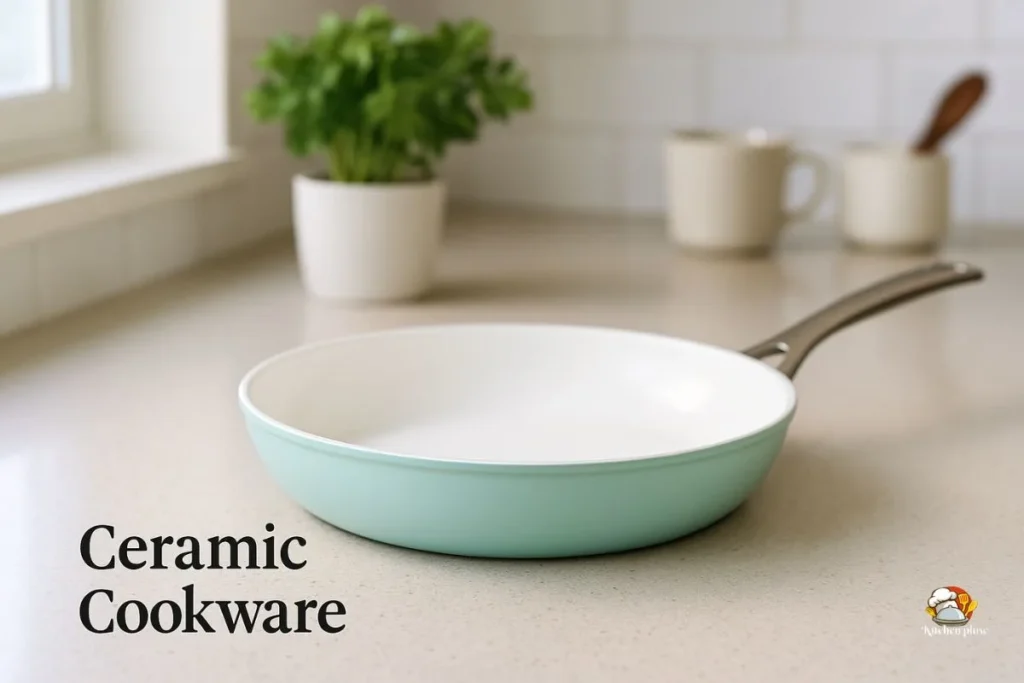
Key Features of Ceramic Cookware:
- Beginner-friendly → Naturally nonstick and simple to use.
- Chemical-free → Made without Teflon/PTFE coatings.
- Heat-safe → Can handle higher heat than PTFE pans, but the coating chips more easily.
- Lifespan → Typically lasts 1–3 years before losing its nonstick surface.
- Popular brands → GreenPan, Caraway, Xtrema.
Is ceramic cookware safe?
Yes, when used properly. Ceramic nonstick pans are PFOA-free and safer at higher heat. However, Healthline notes that coatings tend to wear out faster, which limits long-term durability.
⬇️Now that we know the basics of both, let’s put them side by side and compare their real differences.
Hard Anodized vs Ceramic – Key Differences
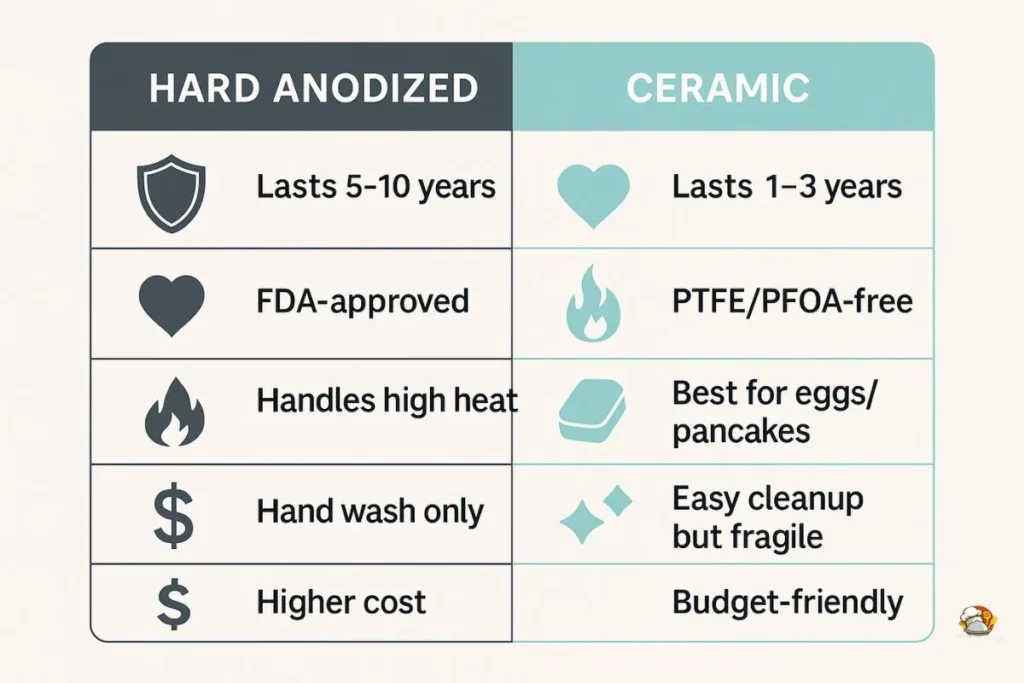
Durability & Lifespan:
How long does hard anodized vs ceramic cookware last?
Hard anodized cookware lasts 5–10 years with proper care, while ceramic cookware usually lasts only 1–3 years.
- Hard Anodized: Very scratch-resistant, dent-proof, and strong against daily wear.
- Ceramic Cookware: Lightweight and smooth, but the coating chips faster and loses nonstick power sooner.
👉 If durability is your top priority, check my [Best Hard Anodized Cookware] picks that lasted more than 8 years.
⬇️Durability is important, but safety is even more critical when choosing cookware. Let’s compare how safe each type really is.
Safety & Health Concerns:
Is hard anodized cookware safer than ceramic?
Yes, both are safe. The FDA approves hard anodized cookware when it’s intact, and ceramic cookware stays PTFE- and PFOA-free, though it’s less durable.
Hard Anodized Cookware:
According to the FDA, anodized aluminum does not leach into food if the surface remains intact. It’s safe for daily use as long as you avoid deep scratches.
Ceramic Cookware:
Always free from PTFE and PFOA. Ceramic nonstick coatings are considered safer at higher heat compared to Teflon pans. The EPA warns that overheated PTFE (above 500°F) can release fumes, but ceramic coatings don’t have this issue. However, ceramic coatings wear out faster, usually within 1–3 years.
❌Myth-busting:
Does hard anodized cookware cause cancer?
No. There is no evidence, and the FDA confirms it is safe for daily cooking.
⬇️Once safety is clear, the next question is: how do they actually perform in the kitchen?
Cooking Performance:
Which cookware performs better for cooking – hard anodized or ceramic?
Hard anodized cookware performs better for medium to high heat cooking, while ceramic cookware is best for low-oil and delicate meals.
Hard Anodized:
Heats evenly and can handle medium to high heat. Perfect for searing steak, stir-frying vegetables, and browning foods.
Ceramic Cookware:
Works best for gentle cooking like eggs, pancakes, and fish. Needs less oil, which makes it beginner– and health-friendly.
If you often cook steak, stir-fries, or sauces, hard anodized is the better performer. For quick low-heat breakfasts or light meals, ceramic is easier to use.
⬇️Of course, cooking performance matters—but if cleanup feels like a hassle, the pan won’t stay your favorite. Let’s see how they compare in cleaning and maintenance.
Cleaning & Maintenance:
Which cookware is easier to clean – hard anodized or ceramic?
Ceramic cookware is easier to clean, while hard anodized cookware needs more careful hand washing.
Hard Anodized:
Should be hand washed with mild soap. Avoid bleach, steel wool, or metal utensils to protect the surface.
Ceramic Cookware:
Naturally nonstick and often dishwasher-safe. However, the coating is fragile and can chip if scrubbed roughly
If you want quick cleanup, ceramic cookware is more convenient. For long-term durability, handwashing hard anodized pans is worth the effort.
👉 Need step-by-step care tips? See my guide: How to Clean Hard Anodized Cookware.
⬇️Ease of cleaning is one thing—but price and long-term value often decide what stays in your kitchen. Let’s compare their cost-effectiveness next.
Price & Value:
Which cookware offers better value – hard anodized or ceramic?
Hard anodized cookware offers better long-term value, while ceramic cookware is cheaper upfront but less durable.
Hard Anodized:
Higher initial cost but lasts 5–10 years, making it a smarter investment for families and frequent cooks.
Ceramic Cookware:
Budget-friendly and eco-conscious, but usually needs replacing every 1–3 years.
If you want cookware that saves money in the long run, hard anodized is the better choice. Ceramic works well for buyers on a budget who don’t mind replacing pans more often.
👉 If you want to compare real value, I’ve included both premium and budget picks in my Best Hard Anodized Cookware Guide.
Budget vs Premium Cookware:
Hard anodized cookware often falls into the premium category, while ceramic is more common in budget cookware. In 2025, U.S. buyers often compare budget cookware vs premium cookware to balance long-term value and upfront price.
- Premium buyers choose hard anodized for durability (5–10 years) and high-heat cooking performance.
- Budget-conscious cooks often pick ceramic for quick, eco-friendly meals, even if it means replacing pans every few years.
👉Want a deeper breakdown? Read my full guide on Best Budget vs Premium Cookware in 2025
⬇️To make this comparison even easier, here’s a quick pros and cons table for both cookware types.
Pros & Cons Comparison Hard Anodized vs Ceramic Cookware
| Feature | Hard Anodized Cookware | Ceramic Cookware |
| Durability | ✅ Long-lasting (5–10+ yrs) | ❌ Shorter (1–3 yrs) |
| Safety | ✅ FDA-approved, no leaching | ✅ PFOA/PTFE-free, eco-friendly |
| Cooking | ✅ Handles high heat (steak, stir-fry) | ✅ Best for low-oil cooking (eggs, pancakes, fish) |
| Cleaning | Hand wash only | Easy cleanup, but fragile |
| Oven-Safe | Many up to 400–450°F | Often oven-safe, but lower temp |
| Best Use Case | 👨👩👧 Families, home chefs, high-heat | 🥞 Beginners, eco-friendly, quick meals |
| Price & Value | 💲💲 Higher upfront, but lasts longer (better ROI) | 💲 Budget-friendly, but needs frequent replacement |
👉 Want a deeper breakdown? Read my full guide on Hard Anodized Cookware Pros and Cons.
⬇️A pros and cons list is helpful, but the right choice still depends on your cooking style and budget.
When to Choose Hard Anodized vs Ceramic Cookware
Many readers ask me which cookware works better — hard anodized or ceramic. It really depends on how you cook, what your budget is, and how long you want the pans to last.
Choose Hard Anodized If:
- You cook every day and want pans that last close to a decade.
- You often use medium to high heat for steak, stir-fry, or sautéing.
- You’re a family cook or home chef who values durability and long-term value.
Best Cookware for Families:
Hard anodized cookware is the best choice for families who cook daily dinners and need durable, long-lasting pans. It offers better return on investment for households that cook a variety of meals.
Choose Ceramic Cookware If:
- You mostly cook simple, low-heat meals such as eggs, pancakes, or fish.
- You prefer eco-friendly, beginner-friendly pans that need less oil.
- You’re on a budget and don’t mind replacing pans every 1–3 years.
Eco-Friendly Cookware Alternative:
Beginners, students, and eco-conscious buyers often choose ceramic cookware because it’s safe, chemical-free, and perfect for quick, easy meals.
👉 See Also:
⬇️By now, you’ve seen durability, safety, cooking, cleaning, and price. Let’s pull it all together with a clear final verdict.
Final Verdict: Hard Anodized vs Ceramic Cookware
Which is better overall – hard anodized or ceramic cookware?
Hard anodized cookware is better for families and serious home chefs who want durability and long-term savings, while ceramic cookware is best for beginners and eco-conscious buyers who prefer lighter, low-cost pans.
Health-conscious buyers:
Both are safe. Hard anodized is FDA-approved if the surface stays intact, while ceramic is always PTFE- and PFOA-free. If health is your top concern, stainless steel may be an even better choice.
My Quick Recommendation (2025 Guide):
Best for families & serious home chefs → Hard Anodized Cookware
Best for beginners & eco-conscious cooks → Ceramic Cookware
For U.S. families who cook every day, hard anodized pans provide the best durability, while ceramic pans remain a popular choice for eco-conscious American households.
👉 Want tested brand picks? Check my Best Hard Anodized Cookware in 2025
⬇️Still have questions? You’re not alone—here are the most common questions I get about hard anodized vs ceramic cookware.
FAQ: Hard Anodized vs Ceramic Cookware
Which is better, hard anodized or ceramic cookware?
Hard anodized cookware is better for durability and high-heat cooking (5–10 years). Ceramic cookware is eco-friendly, lighter, and best for low-heat meals but usually lasts only 1–3 years.
What are the disadvantages of hard anodized cookware?
- Higher upfront cost compared to ceramic.
- Heavier weight, not always dishwasher-safe.
- If deeply scratched, the inner aluminum may be exposed.
👉 Read Full Guide: [Hard Anodized Cookware Pros and Cons]
What are the disadvantages of ceramic cookware?
- Shorter lifespan (1–3 years).
- Coating chips or loses nonstick ability faster.
- Not ideal for high-heat or metal utensils.
Is hard anodized cookware safe?
Yes. According to the FDA, anodized aluminum is sealed during the process and does not leach into food if the surface is intact.
👉Read The Full Guide: Is hard anodized cookware safe?
Is ceramic cookware safe?
Yes. Ceramic pans are PTFE- and PFOA-free, making them safe at higher heat than traditional Teflon. But Healthline notes the coating wears out faster, so replace once chipped.
Which cookware is best for health?
- Stainless steel → Safest, no coating.
- Hard anodized → Safe and durable if intact.
- Ceramic → Chemical-free and eco-friendly, but wears faster.
How long do hard anodized pans last?
Hard anodized pans last 5–10 years with proper care. Hand washing and avoiding metal utensils extend lifespan.
Is hard anodized cookware toxic?
No. The anodization process seals the aluminum, making it non-reactive. FDA confirms it is safe for daily use. Replace pans if the inner aluminum layer becomes exposed.
Which one is healthier: ceramic, hard anodized, or stainless steel?
- Stainless steel → Best for health (no coatings).
- Hard anodized → Safe and durable when intact.
- Ceramic → PFOA/PTFE-free, beginner-friendly, eco-conscious, but less durable.
👉Also Read: Hard Anodized vs Stainless Steel
What cookware lasts the longest?
Cast iron and stainless steel usually last decades with proper care. Hard anodized lasts 5–10 years, while ceramic usually lasts 1–3 years.
About the Author:
MD Soazim is a U.S.-based home cook and cookware reviewer. He has tested brands like Calphalon, Circulon, GreenPan, and Caraway in his own kitchen. In this guide on Hard Anodized vs Ceramic Cookware, he shares real cooking tests on durability, safety, and everyday performance to help readers make the right choice.

